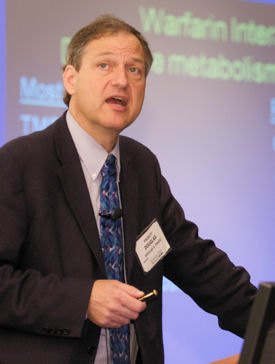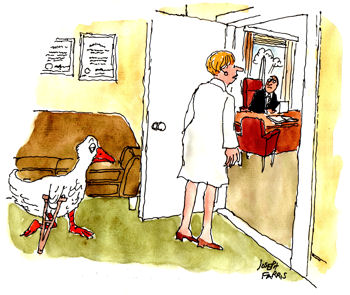Discontent leads to medical home models
Returning primary care to the foundation of health care delivery and adopting the patient-centered medical home as the central hub for each patient's care holds great promise for fostering a system that patients welcome and young physicians find appealing.
Democrats and Republicans cite health care cost as one of their greatest worries. But absent a landslide victory (like that of FDR over Alf Landon in 1936, which permitted adoption of Social Security, or that of Lyndon Johnson over Barry Goldwater in 1964, which enabled the passage of legislation creating Medicare and Medicaid), there may not be the political majorities nor the will to tackle such a complex and contentious issue as comprehensive health care reform.
Even if the election produces a mandate for major change, the nation's financial situation probably will limit the breadth of reform. With U.S. health care projected to consume nearly one out of every five dollars of the economy by 2017, according to CMS, with the federal deficit stimulating demand for a “pay-as-you-go” budget, and with military expenditures anticipated to remain substantial for the foreseeable future, it can be reasonably predicted that, regardless of the election outcome, pursuit of health care reform will be more limited than when it was last attempted at a national level in 1993.
Nevertheless, given the broad discontent over cost and access, it is difficult to imagine that a new administration and Congress will not try to implement some change. If the scope of reform must be limited, it is reasonable to predict that a central component of bipartisan interest will involve expanding the nation's supply of primary care physicians and exploring the patient-centered medical home (PCMH) as the model for delivery.
Experience in this country and abroad suggests that an increased ratio of primary care to subspecialty physicians results in quality improvement and decreased costs. Returning primary care to the foundation of health care delivery and adopting the PCMH as the central hub for each patient's care holds great promise for fostering a system that patients welcome and young physicians find appealing.
The presidential candidates have voiced interest in the PCMH concept. Congress has approved a three-year pilot project to test it in eight states. MedPAC, an independent body that advises Congress on how health care delivery should be designed and funded, is advocating a dramatic increase in the scope of the pilot and increased funding to primary care. Twenty-five states are exploring the medical home model for their Medicaid/SCHIP programs.
On the private side, membership in the Patient Centered Primary Care Collaborative attests to the mounting interest in PCMH as a superior means of delivering health care in the U.S. Included among its more than 120 members are the AARP, the U.S. Chamber of Commerce, the AFL-CIO, and major U.S. corporations that collectively have more than 50 million employees.
The PCMH concept has been endorsed by 17 professional medical societies. Multi-payer demonstration projects are being pursued in the government and private sectors.
Expansion of the nation's supply of primary care physicians, practicing within patient-centered medical homes, can be expected to be a focus of the health care reform debate regardless of who is elected next fall. It will also be a source of intense interest among general internists, subspecialist internists and hospital-based internists. In the September column, as the election year debate continues, we will focus on two questions that many physicians are posing: How will my practice life and patients' experiences change in a PCMH, and how might the practice business model change when a PCMH is implemented?




